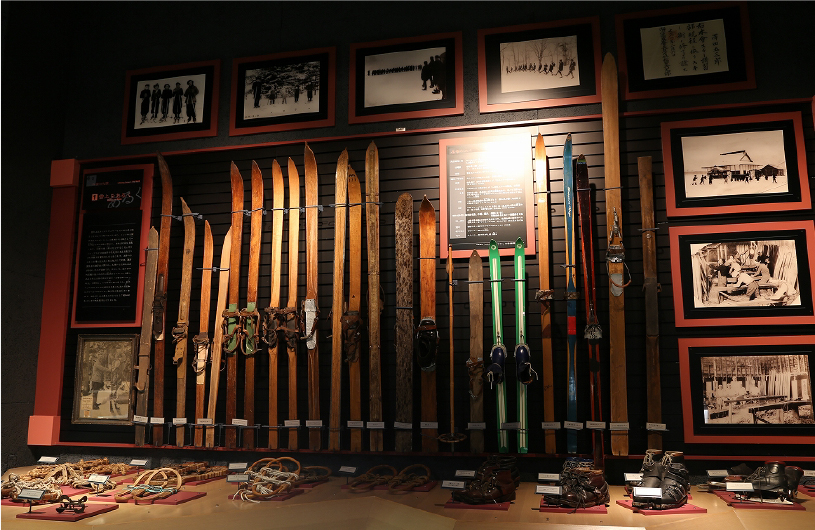
Nayoro Hokkoku Museum Ski Exhibition Room

Nayoro Hokkoku Museum Ski Exhibition Room
The reason skis began to be produced in Nayoro in 1921 is that it has a lot of good raw materials such as Itaya and oak. For craftsmen who began making horse-drawn sleighs, agricultural machinery and furniture and had the skill to bend wood, making single-board skis probably wasn't that difficult.
In the Taisho and Showa periods, businesses such as Fuji Ski Factory, Chikyu Shirushi Nishimura Ski Factory, Suzuki Ski Factory and Onozu Ski Wood Shop opened one after another. After a while the quality reputation grew, and there was a time when Nayoro skis were seen in Karafuto, Asahikawa and Sapporo, were sold in Tokyo department stores and were even exported to Canada.

The Fuji Ski Nayoro Factory in August 1923. (Photo courtesy of Nayoro Hokkoku Museum).

The Chikyu Shirushi Nishimura Ski Factory in 1952. (Photo courtesy of Nayoro Hokkoku Museum).
Nayoro was also early to introduce skis into school education. The current Nayoro High School, which opened in 1922, has had a complete collection of woodworking tools since the early Showa period (1926–1989), and ski making began as a form of handicraft education.
After the war, research advanced on laminated wood skis and the school's technical ability — such as the ability to produce 20 skis in a day — gained an established reputation. The activities of the handicraft department at Nayoro High School were featured in the Hokkaido Shimbun under the headline "Quality and Quantity Both on a Par With a Factory," on Jan. 18, 1961.

Nayoro Hokkoku Museum
This is a museum for enjoying northern Hokkaido while learning about the nature and history of Nayoro. The snow-removing steam locomotive Kimaroki, the only one of its kind left in Japan, is on display outdoors in front of the museum on the tracks of the former government-owned Nayoro main line.
222 Midorioka Nayoro, Hokkaido, Japan Tel.: 01654-3-2575
Website

Sunpillar, where visitors can see the sunrise and sunset, on a windless day in midwinter.